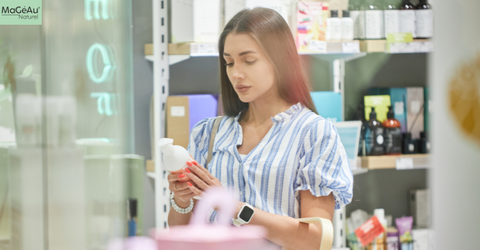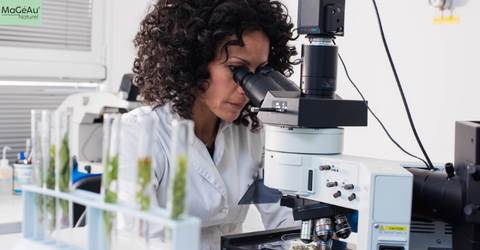Every day, we are bombarded with advertisements showcasing "eco-friendly," "natural," and "clean beauty" products. These buzzwords make us feel good about our choices, but how often do we stop to question whether these claims are genuine? Unfortunately, many beauty brands engage in a practice called "greenwashing" using misleading labels or marketing strategies to appear more environmentally friendly or ethical than they truly are. Here, we’ll uncover what greenwashing looks like in the beauty industry and help you make better, informed choices.
What Is Greenwashing?
Greenwashing happens when companies use terms like “100% natural,” “eco-friendly,” or “organic” without proper certifications or transparency. They count on the fact that most consumers won’t look too deeply into these claims. While the words sound reassuring, they’re often vague or downright inaccurate.
The Common Issues Consumers Face
1. The Misleading '100% Natural' Label
Have you ever purchased a product because it claimed to be “100% natural”? While this phrase sounds wholesome, there’s no legal or standardised definition for what qualifies as “100% natural.” Some brands use the term even if their products contain synthetic ingredients. A product may include one or two natural extracts but still rely on synthetic chemicals for texture, fragrance, or preservation.
What You Can Do: Look for authentic reviews from verified sites or deal with a brand which is committed to delivering eco-friendly products to ensure they truly meet natural or organic standards.
2. Confusion Around Yuka Ratings
The Yuka app is a popular tool for evaluating beauty products based on their ingredient safety. While it’s a fantastic resource, some brands use their Yuka scores as a marketing tool, even when the products aren’t entirely clean or eco-friendly. A good Yuka rating doesn’t always mean the product is free from harmful practices like greenwashing.
What You Can Do: Use Yuka as a guide but combine it with deeper research. Check ingredient lists and research brand transparency.
3. The 'Cruelty-Free' Claims
Cruelty-free products are a top priority for many consumers, but not all claims are genuine. Some brands label themselves as cruelty-free while outsourcing testing to third parties that may conduct animal tests. Additionally, selling products in countries where animal testing is mandatory, like China, contradicts cruelty-free claims. In the European Union, animal testing for cosmetics was banned in 2013, which was a big step for cruelty-free standards. In the United States, this change has only started happening recently, with more rules being introduced to reduce or stop animal testing in the beauty industry.
What You Can Do: Look for certifications from trusted organisations like Leaping Bunny or PETA’s cruelty-free certification.
4. 'No Paraffin or Parabens', But What Else Is Hiding?
It’s common to see labels proudly stating “No paraffin,” “No parabens,” or similar exclusions. While it’s great to avoid these potentially harmful ingredients, brands often emphasise what’s not in their products while downplaying questionable ingredients they do use. For instance, they may replace parabens with other preservatives that are just as problematic but less well-known.
What You Can Do: Don’t just stop at the “free-from” claims. Read the full ingredient list and look up unfamiliar terms. Apps like Yuka or INCI Beauty can help decipher complex names.
5. Sulfate-Free and Silicone-Free Isn’t Always Better
“No sulfates” and “no silicones” have become common selling points in hair care and skincare products. While sulfates can be drying and silicones may build up on hair, these ingredients aren’t universally harmful. In some cases, their alternatives can be less effective or even worse for your skin and hair.
What You Can Do: Understand your personal needs. For example, sulfates might be fine for oily hair but too harsh for dry hair. Do your homework on what works for your body rather than following trends.
Hidden Greenwashing Tactics
1.Recycled Packaging Claims Many brands boast about using recycled or recyclable packaging, but how much of it is truly recyclable in your area? Some plastics labeled as recyclable can’t be processed everywhere. Others may include mixed materials that are hard to separate for recycling.
2.Overusing Buzzwords Words like “sustainable,” “environmentally friendly,” or “handmade” are often used without proper evidence to back them up. Brands rely on these phrases to create an illusion of responsibility while offering little transparency.
3.Hidden Ingredients Brands often use umbrella terms like “fragrance” or “perfume” to mask harmful chemicals. These terms can contain dozens of undisclosed ingredients, some of which may be allergens or toxins.
How to Avoid Greenwashing
1. Look for Certifications: Certifications like USDA Organic, Leaping Bunny, or Fair Trade provide assurances that the product meets certain standards.
2.Research the Brand’s Ethics Brands that are truly committed to sustainability and ethics often have transparent supply chains and publish detailed information about their practices.
3.Be Sceptical of Vagueness If a product claims to be “100% natural” or “cruelty-free” but offers no evidence, take it with a grain of salt.
4.Use Trusted Tools Apps like Yuka and Think Dirty are excellent starting points for evaluating product safety, but they shouldn’t be your only source of information.
5.Educate Yourself on Ingredients Familiarise yourself with common harmful ingredients and their alternatives. The more you know, the harder it will be for brands to deceive you.
Unmasking the Truth: Avoiding the Trap of Greenwashing in Beauty Marketing
Greenwashing exploits our desire to make ethical, healthy, and eco-friendly choices. By being aware of the tactics used by beauty brands, you can protect yourself from falling for misleading claims. Remember, a truly sustainable and ethical product is more than just a trendy label. Take the time to research, verify claims, and choose brands that align with your values.
Let’s empower ourselves to make informed decisions that are better for us and the planet!





Comments (0)
There are no comments for this article. Be the first one to leave a message!